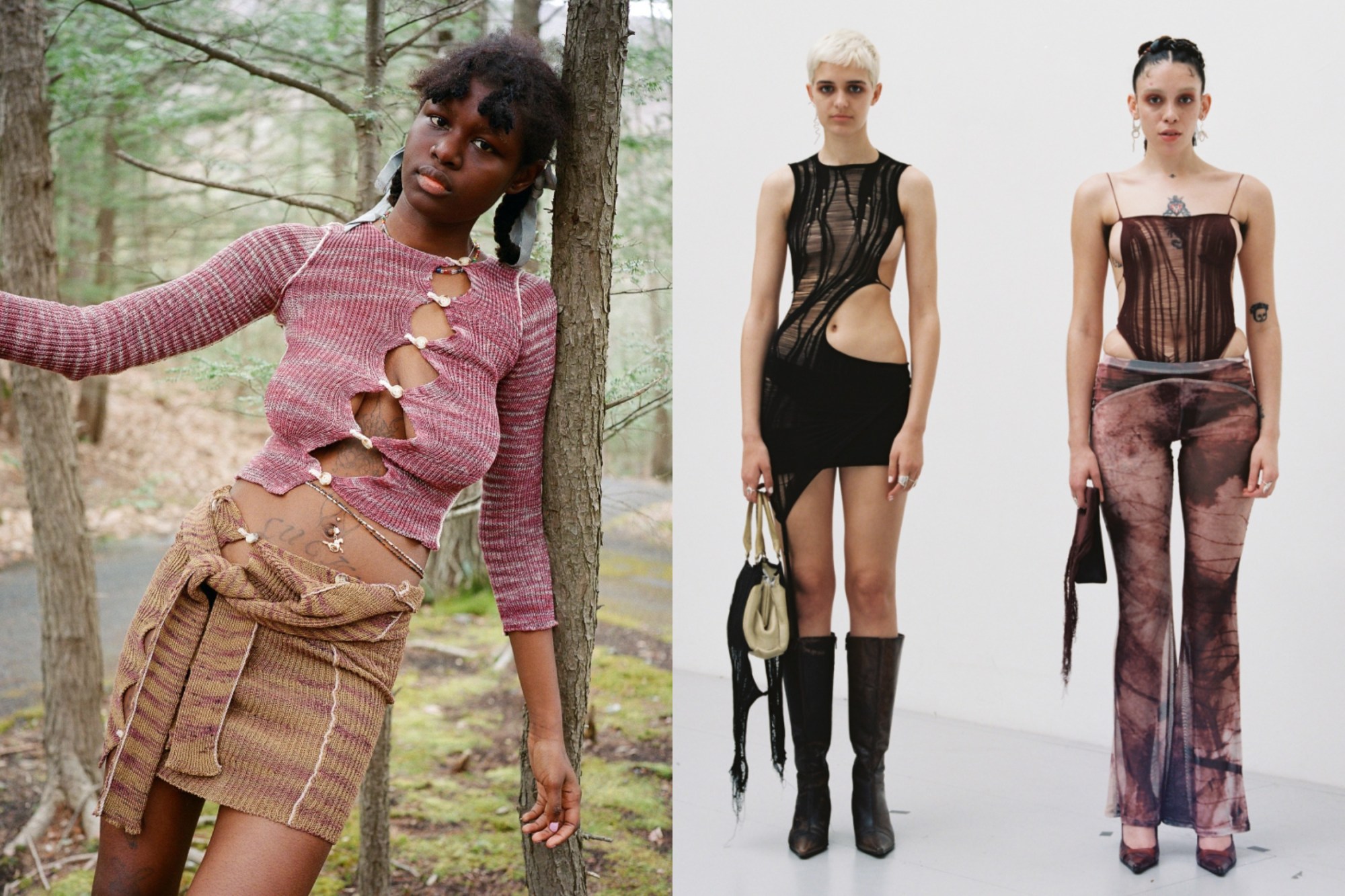Post-vax summer is here: the nightclubs are open, the weather is scorching and everyone’s wearing… knitwear? Despite its rather conservative, winter-y associations (stuffy grand-dad sweaters and chunky scarves), the knit, in its many forms, has arrived as summer 2021’s go-to going-out garment. Think ribbed cut-outs, netted naked dresses and shredded ladder stitches.
Sure, you can attribute the proliferation of the sexy knit to both lockdown ennui (crochet-as-hobby) and post-pandemic revenge dressing. But you should also credit its rise to a new generation of knitwear designers who are pushing the boundaries of the fashion category through craft, concept and a lot of creativity. Here, i-D speaks with Crandall Duffy’s Cat Duffy, Ecke Faei’s Freya Grötecke and Julia Forslund, Gabe Gordon and SONJI’s Sonja Locher about the origin and inspiration behind summer’s sexiest staple.
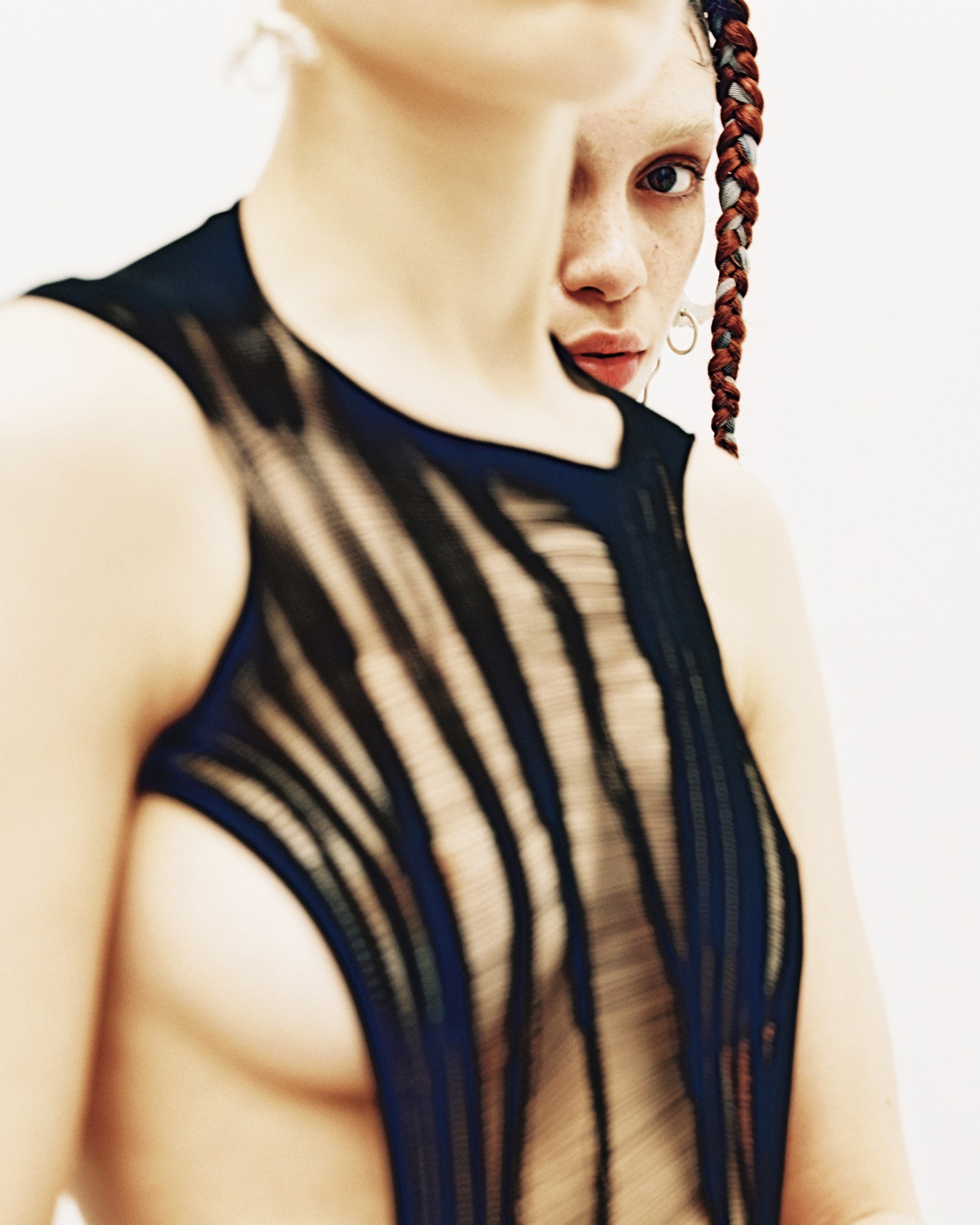
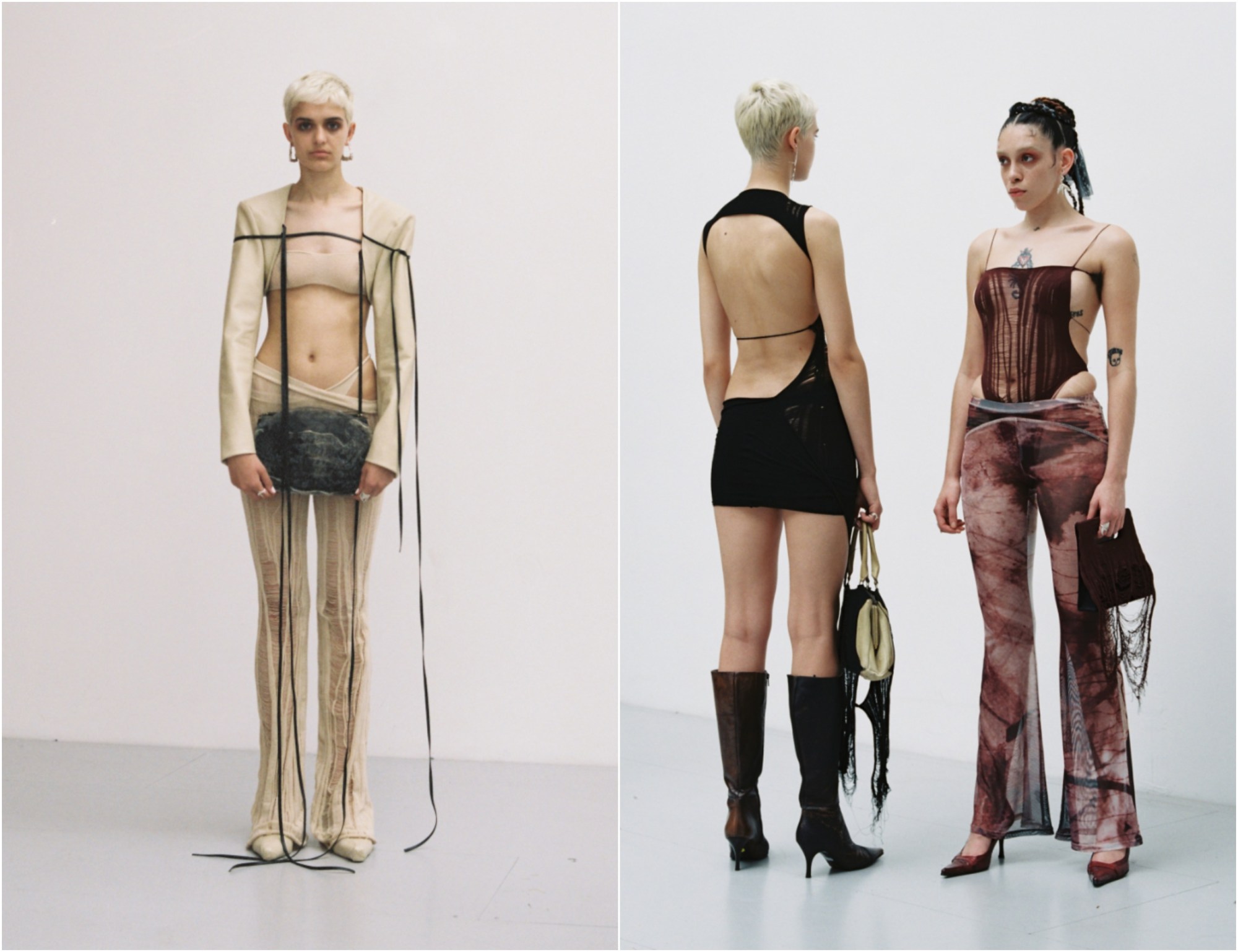
Ecke Faei
After meeting as students at the UK’s Kingston School of Art, Freya Grötecke and Julia Forslund founded Ecke Faei during 2020’s lockdowns. Drawing from their shared backgrounds, the duo design fragile knitwear pieces for all sizes and gender identities.
How did you start designing knitwear?
It was Freya that had the initial interest and knowledge in knitwear, as throughout her education she was always gravitating towards textile creation and manipulation. As a duo, we were fascinated by how the stretch yarn allowed so many different bodies to fit into the same tiny piece, yet, with integrity, as the knit would mould itself to the body of the wearer, allowing them control of how they wanted to manipulate the garment to their own comfort.
What’s the ethos behind Ecke Faei?
As two working-class students, working collaboratively was not only a sharing of skill sets and resources, but also allowed us to research into our differing working class heritages to create our brand ethos and project concepts. Our ethos is to create slow fashion that subverts the ideas of working-class aesthetics, where we get to celebrate where we come from in a high fashion world.
Could you speak to the inspiration behind your unique ladder stitch pieces?
It came from our concept ‘Hanging on by a Thread’, which is a visual exploration of the imbalance of power felt by the working class. Taking inspiration from ‘The Sword of Damocles’ and Shelley’s ‘Masque of Anarchy’ we wanted to echo the idea that when people come together, we are stronger than as individuals alone. We worked from studies of ripped stockings linking to both Julia’s heritage, whose great grandmother worked in a lingerie factory in Sweden, as well as the idea of shame surrounding ripped tights as a marker of being poor.
How does the body inform your work?
The body is everything, whether that be our own bodies and what we feel comfortable wearing or our friends wearing our garments and giving us feedback on how the garments could be altered. We developed all the styles at home during lockdown, so we were our own fit models, which meant we created garments that can comfortably span sizes six to fourteen. The body also dictates our next design path as we now want to expand the size range of our pieces with further fit models in larger sizes, and how we can do that with integrity as a brand but also for the wearer to feel the most empowered.

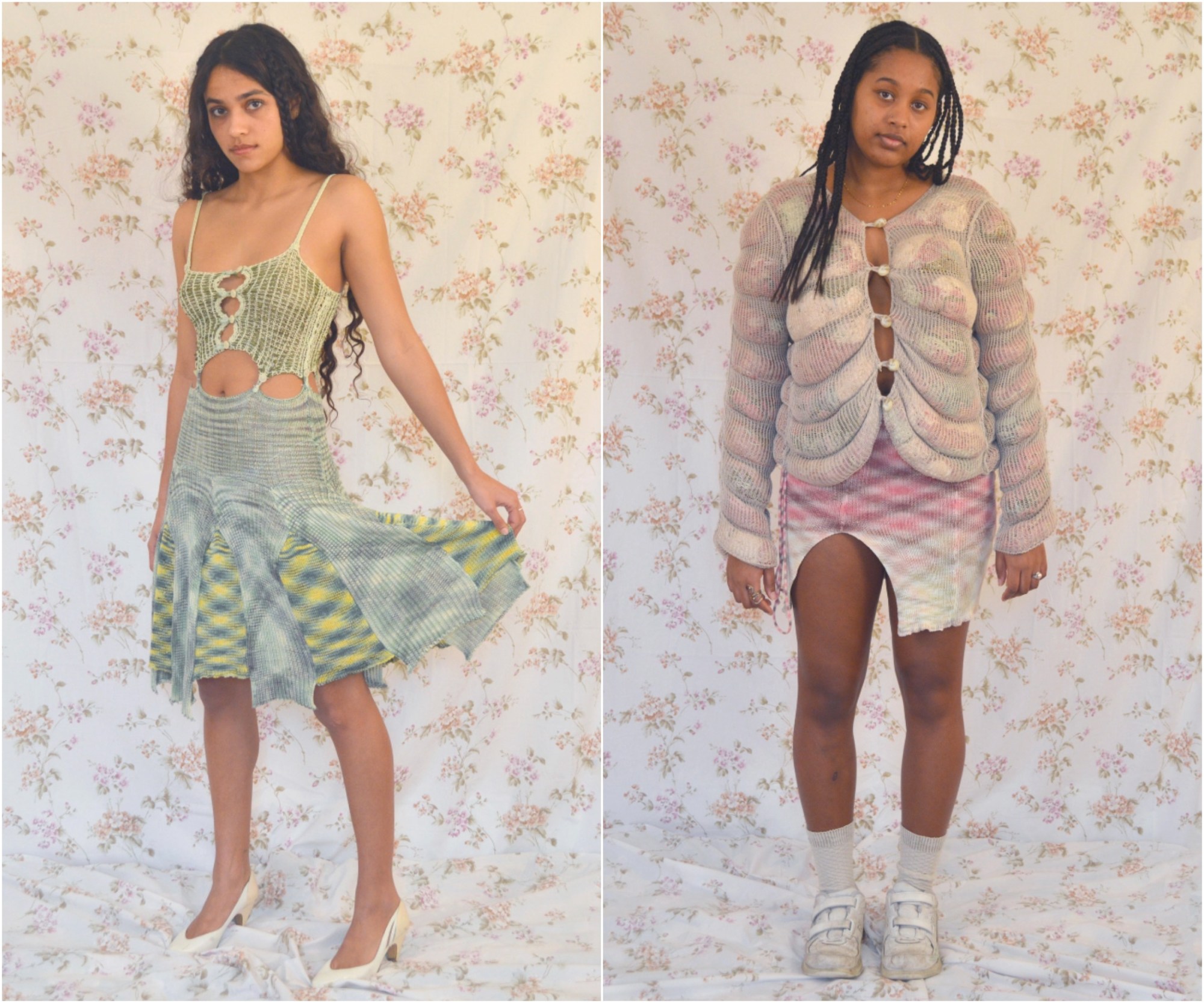
Gabe Gordon
Inspired by his own personal history, Rhode Island School of Design student Gabe Gordon creates cut-out knits that explore the state of vulnerability that exists between comfort and discomfort.
What drew you to knitwear as a category?
During my sophomore year, my father passed away and it really shifted the trajectory of how and why I make work. Coming back to school, I was so agitated and stimulated and I needed to find catharsis and knitwear became this perfect outlet. Creating garments from yarn and developing my own fabric is super exciting because there is this feeling of continuous potential when creating from scratch. And I think cloth can have a life of its own, changing over time; it’s in a constant state of becoming.
Conventionally, knitwear is worn to keep warm and cover up, and has thus developed a reputation for being a pretty conservative garment category. How do these notions inform your design process — are you challenging them?
I’m drawn to challenging the ways in which knit garments traditionally yield a sense of warmth and comfort. In my work, I’ve been trying to find some kind of balance or push and pull between comfort and discomfort. I have a lot of weird touch aversions, and different materials and fabrics feel so uncomfortable on my skin. For instance, I used to hate the touch of dry cotton, but I was inclined to confront it. And in how I dress, I sometimes find myself trying to confront silhouettes that make me feel uncomfortable. I guess I’m trying to go beyond just making clothes that feel good to wear, but require whoever wears my pieces to enter a state of exposure and vulnerability.
Could you speak to the inspiration behind your unique knit cut-out pieces?
I became invested in reading books by authors who describe their trauma from losing a loved one. It was interesting to see the similarities of all of our experiences. For instance, Joan Didion, in The Year of Magical Thinking, literally describes her grief as a “vortex,” which I identify with so heavily. These “vortex” pieces were intended to visualize sensations that came with feelings of grief: this feeling of tumbling, falling and spinning. They’re supposed to show warmth, but also a constriction, like a tight squeeze. And the hand-dyeing process stretches around the form, changing in scale and color. I wanted to address a movement and wrapping around the body.
How does the body inform your work?
I think knitwear can act as a new skin since it can conform so tightly to the body. It becomes an exposure of oneself that may feel uncomfortable at first, but can ultimately become a freeing experience.
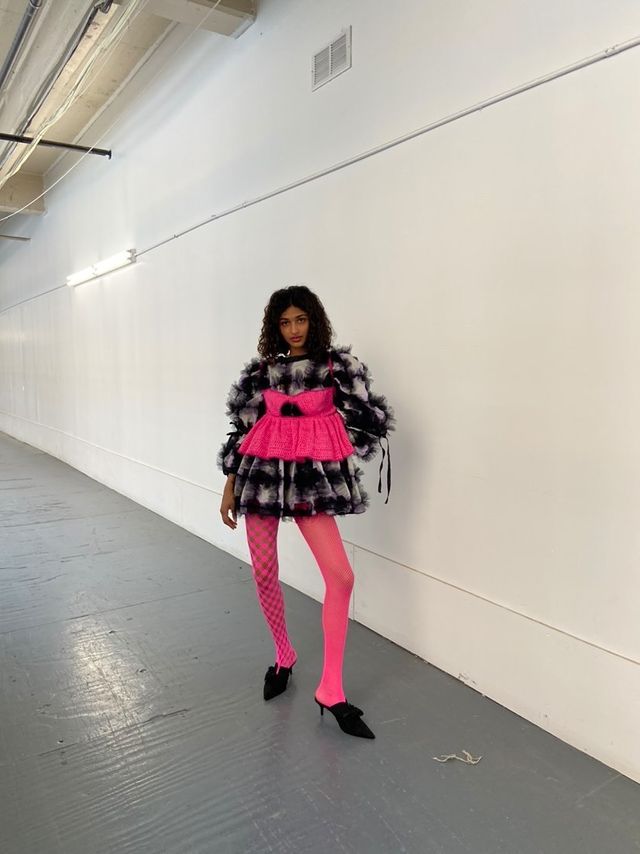
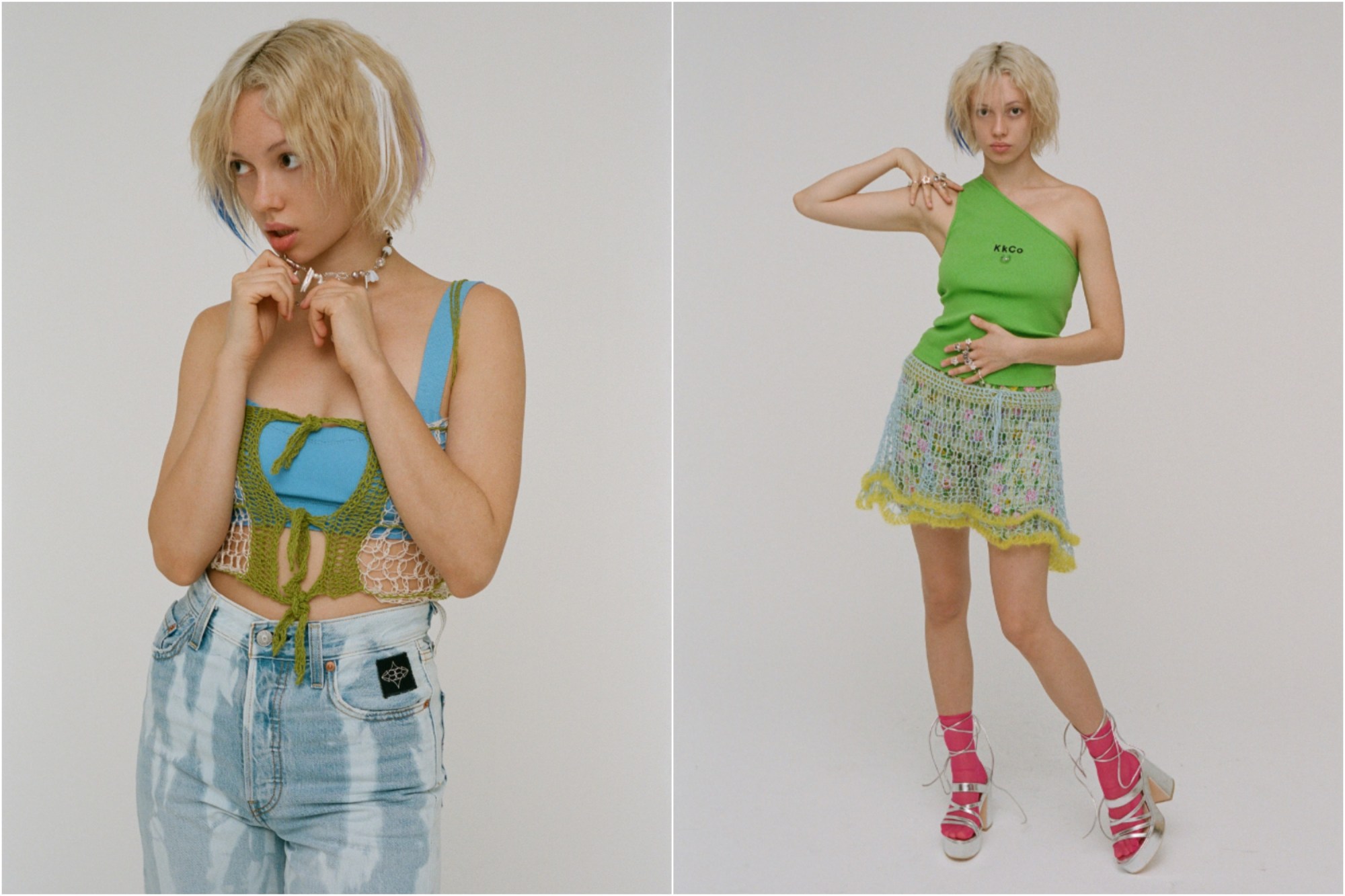
Crandall Duffy
With her label Crandall Duffy, Maine-based designer Cat Duffy subverts crochet’s domestic associations to create sexy, empowering garments that celebrate femininity in all its forms.
What drew you to crochet as a technique?
I came to it very naturally — all the women in my family knit or crochet and have done so for generations. It wasn’t until I was in college and away from my family that I picked it up again, and it felt like an instinctive thing my hands knew how to do. I’m able to sculpt yarn into intricate shapes and frills with crochet in a way I can’t with other mediums.
What’s the ethos behind your label?
Crandall Duffy is about handmade, high-quality garments that are imbued with love. I’m inspired by my upbringing in the woods and coast of Maine, fairy tales and vintage frilliness. At the same time, I’m focused on creating a label that is the antithesis of the fast fashion system’s impersonal and almost hostile nature.
Conventionally, knitwear is worn to keep warm and cover up, and has thus developed a reputation for being a pretty conservative garment category. How do these notions inform your design process — are you challenging them?
I wouldn’t say I’m designing against the associations, but making clothes my peers and I would feel sexy and cute wearing. I embrace the lacey quality, the ruffles and frills. Crochet and knitwear is commonly associated with a certain kind of femininity that equates to docility or subservience because of its relationship to the home and the homemaker. Instead of viewing that as a negative aspect of the practice, I like to subvert it, which results in garments that make the wearer feel powerful and sexy.
How does the body inform your work?
At times I focus on creating pieces that accentuate the movement of the person wearing it, that hug the body while dancing around as the person walks, turns, goes through their day. Other times, I’m creating structures through fabric that alter how the body appears, large puffs on the sleeves, or stitches pulling the fabric tight against the skin.

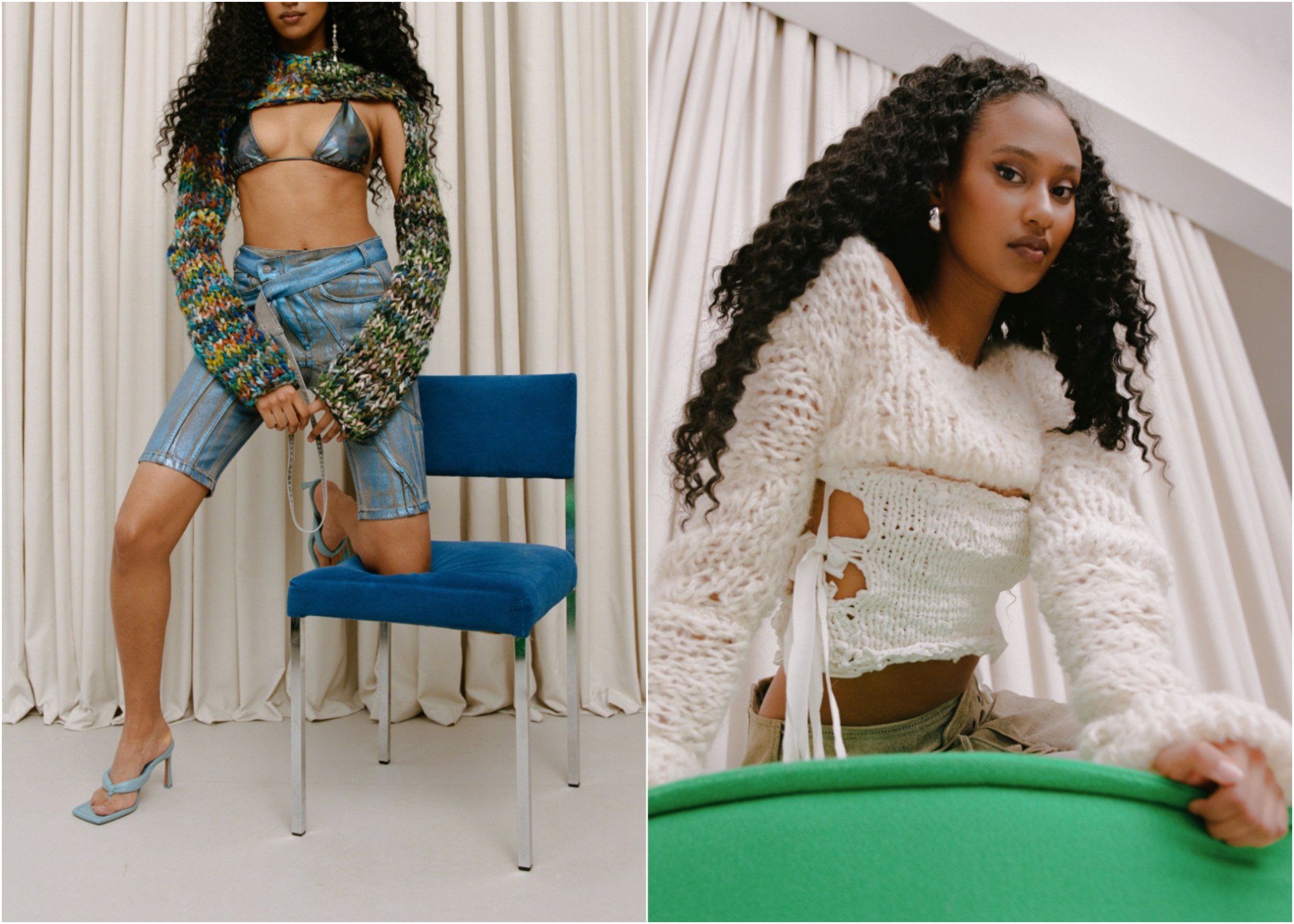
SONJI
Based between Berlin and Vienna, SONJI designer Sonja Locher draws inspiration from the disparate energies of both cities to create her featherlight open-knit pieces.
How did you start designing knitwear?
At the start of SONJI I actually had a lot of ideas for dresses and other types of garments, but I just didn’t have the skills or knowledge to make them myself or the funding to put a team together. In the beginning, I was also very shy and private about my ideas and preferred working alone. I think knitwear was the best and quickest way to make my ideas become reality without going through a massive production process.
What’s the ethos behind your label?
I’ve always wanted to do something where I could hold the product of my creativity in my own two hands. I think this is why I started the label. My aim with SONJI is to create awareness and a sense of responsibility within the fashion sphere: to encourage us to value what we wear for the story behind it — and to know how it’s made and who it’s made by.
Conventionally, knitwear is worn to keep warm and cover up, and has thus developed a reputation for being a pretty conservative garment category. How do these notions inform your design process — are you challenging them?
I’m not actively thinking I have to challenge the old. A piece might not be conservative in itself, but can become conservative in how you style it. I appreciate this about knitwear: it has so many facets. Personally, I just knit what I can imagine looking interesting or beautiful on my friends or on myself.
How does the body inform your work?
My pieces are made for everybody and every body. I offer my customers the option to have the pieces made to their own measurements as I don’t want to work with standard sizing. My designs aren’t created to only look good when worn by a certain type of body. I can already see that the people who own a SONJI knit feel so connected and happy with the piece, like it’s part of them. This was always my hope for the label.
